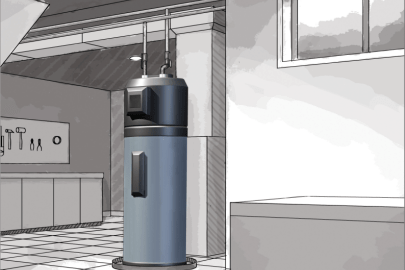Effective Techniques for Maintaining Your Home's Hot Water SystemEfficient Techniques for Maintaining Your Home's Hot Water SystemImportant Guidance on Maintaining Your Home's Hot Water System
Effective Techniques for Maintaining Your Home's Hot Water SystemEfficient Techniques for Maintaining Your Home's Hot Water SystemImportant Guidance on Maintaining Your Home's Hot Water System
Blog Article
Every person maintains their unique notions with regards to How to Maintain a Hot Water Heater in a Few Simple Steps.

Hot water is essential for everyday comfort, whether it's for a revitalizing shower or cleaning meals. To guarantee your hot water system runs efficiently and lasts much longer, regular upkeep is key. This post provides functional tips and understandings on how to keep your home's hot water system to prevent disruptions and expensive fixings.
Introduction
Keeping your home's warm water system may appear difficult, yet with a few basic actions, you can ensure it operates smoothly for many years ahead. This guide covers everything from comprehending your warm water system to DIY upkeep pointers and knowing when to employ specialist help.
Value of Keeping Your Warm Water System
Routine maintenance not only prolongs the life expectancy of your warm water system yet also ensures it runs successfully. Neglecting maintenance can result in reduced effectiveness, greater energy expenses, and even premature failure of the system.
Indications Your Warm Water System Demands Maintenance
Recognizing when your warm water system requires focus can stop significant issues. Watch out for indications such as inconsistent water temperature, odd sounds from the heating system, or rustic water.
Recognizing Your Hot Water System
Before diving into maintenance tasks, it's handy to comprehend the basic elements of your hot water system. Usually, this includes the water heater itself, pipes, anode poles, and temperature level controls.
Month-to-month Upkeep Tasks
Regular monthly checks can help capture small concerns prior to they rise.
Purging the Hot Water Heater
Flushing your water heater removes sediment build-up, improving efficiency and prolonging its life.
Monitoring and Changing Anode Rods
Anode rods avoid corrosion inside the storage tank. Examining and replacing them when broken is critical.
Evaluating and Changing Temperature Settings
Adjusting the temperature setups makes sure ideal performance and safety and security.
Do It Yourself Tips for Maintenance
You can do several upkeep tasks yourself to maintain your hot water system in top problem.
Looking for Leaks
Consistently check pipes and links for leaks, as these can cause water damage and greater expenses.
Examining Stress Relief Valves
Checking the pressure relief valve guarantees it works correctly and stops excessive stress buildup.
Shielding Pipelines
Protecting warm water pipes lowers warm loss and can save power.
When to Call a Specialist
While DIY upkeep is advantageous, some concerns need specialist competence.
Facility Concerns Needing Specialist Assistance
Examples consist of significant leaks, electric troubles, or if your water heater is regularly underperforming.
Routine Professional Upkeep Conveniences
Expert maintenance can consist of extensive examinations, tune-ups, and guaranteeing conformity with safety requirements.
Verdict
Routine upkeep of your home's hot water system is essential for effectiveness, long life, and cost savings. By adhering to these suggestions and recognizing when to look for professional assistance, you can make sure a dependable supply of hot water without unexpected disruptions.
Water Heater Maintenance Tips
Test the TPR Valve
Shut off the power and the cold-water supply valve. Place a bucket under the pipe connected to the temperature-pressure-release (TPR) valve on the top or side of the tank. (This valve opens if the tank pressure gets too high.) Lift the valve’s tab to let some water out, then let go. If water keeps flowing, drain the tank partway, unscrew the old valve with a pipe wrench, and install a new one. Check the Anode Rod
Put a hose to the tank’s drain cock and let out a few gallons of water. Now fit a 1 1/16-inch socket onto the rod’s hex head on top of the heater (or under its top plate) and unscrew the rod. If it’s less than ½ inch thick or coated with calcium, buy a new one, wrap its threads with Teflon tape, put it back in the tank, and tighten securely. Use this segmented rod if headroom above the tank is limited. Drain the Tank and Wash Out Sediment
Drain the remaining water in the tank into the bucket, then stir up the sediment on the tank’s bottom by briefly opening the cold-water supply valve. Drain and repeat until clean water comes out of the hose. Close the drain cock, refill the tank, and turn its power back on. Adjust the Temperature
Find the temperature dial on the side of the tank and unscrew its cover. Adjust the dial to 120 degrees using a flathead screwdriver. For every 10 degrees the temperature is lowered, you can expect to save up to 5 percent in energy costs. Turn the water heater off or the thermostat down to its lowest setting if you plan to be away from home for more than three days. Insulate the Pipes
Buy some self-sticking 3/8-inch-thick foam pipe insulation that matches the pipes’ diameter. Slide the foam over the hot-and cold-water pipes as far as you can reach. Insulating the cold-water pipe prevents condensation in summer. Peel the tape and squeeze the insulation closed. If the pipe is 6 inches or less from the flue, cover it with 1-inch-thick unfaced fiberglass pipe wrap. https://www.thisoldhouse.com/plumbing/21016402/how-to-maintain-a-water-heater

I'm just very drawn to Tips For Maintaining Your Hot Water Heater and I hope you enjoyed my blog posting. Enjoyed reading our article? Please quickly share it. Help other people locate it. We take joy in your readership.
Hire A Pro Report this page